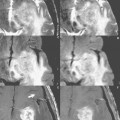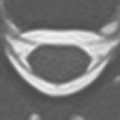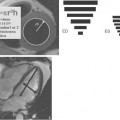49 Dynamic MRA (TWIST/TREAT)
One of the major disadvantages of contrast-enhanced MR angiography (MRA) has been the limitation in temporal resolution. Acquisition time could be substantially reduced using conventional MRA techniques, however at the expense of a marked reduction in spatial resolution. On the other hand, acquiring MRA images with a spatial resolution close to conventional digital subtraction angiography is feasible, but acquisition time would increase and therefore temporal resolution would be impaired, a major drawback.
With the evolution in hardware (strong and fast gradients) and software in the past several years, acquisition times can now be markedly decreased for contrast-enhanced MRA. Based in part on the use of parallel imaging in combination with the improved SNR of 3 T systems, high temporal resolution MRA studies became feasible without diminishing image quality in terms of spatial resolution. For example, recent studies have demonstrated a temporal resolution for high-resolution contrast-enhanced MRA of the carotid arteries as high as 1.5 seconds per scan (3D volume acquisition).
Stay updated, free articles. Join our Telegram channel

Full access? Get Clinical Tree








